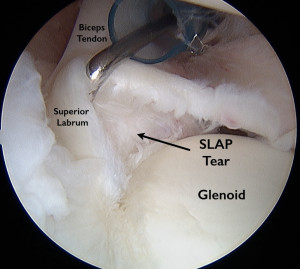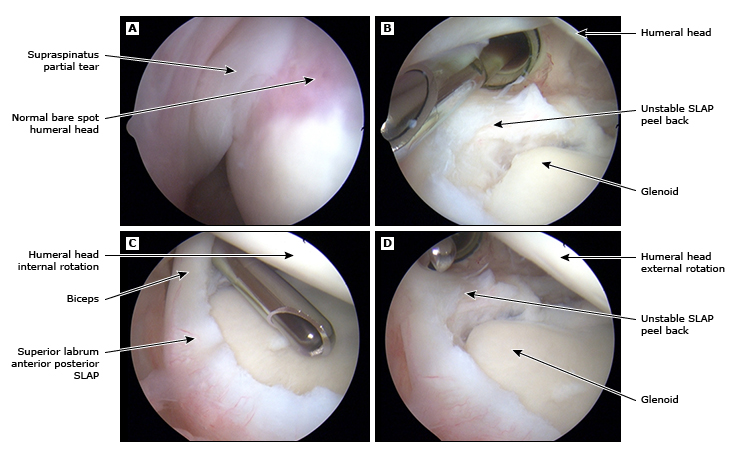What is SLAP Lesion?
SLAP an acronym for “shoulder superior labral tear from anterior to posterior” is an injury to the shoulder’s labrum.
People involved in repetitive overhead motions such as baseball pitchers, swimmers, weight lifters, tennis players, and manual labourers are more vulnerable. SLAP tear has a high prevalence rate in men than in women aged under 40.
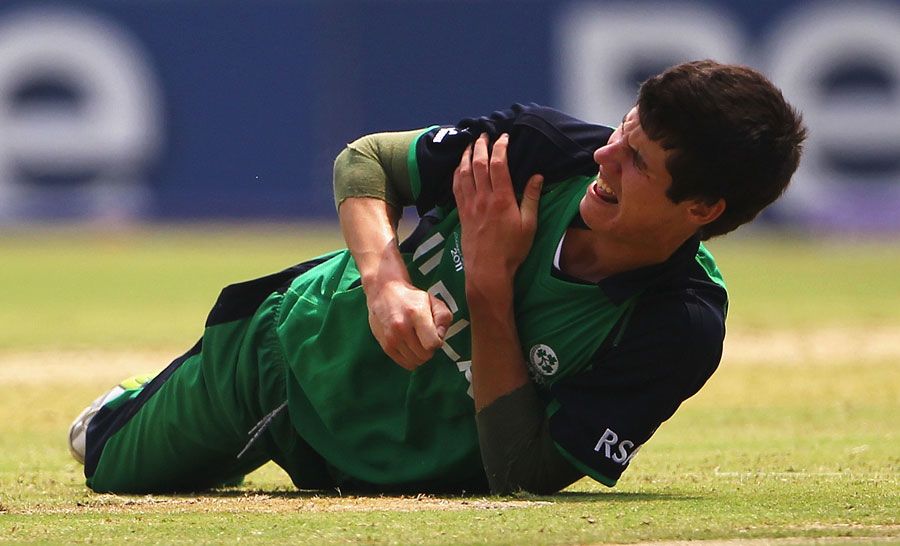

The shoulder, a ball-and-socket joint, is made up of three bones- humerus (upper arm), scapula (shoulder blade), and clavicle (collarbone). The humeral head fits into a rounded socket in the shoulder blade. This socket is known as the glenoid and surrounding the outside edge of the glenoid is a rim of strong and fibrous tissue known as the labrum. The labrum helps in deepening the socket and stabilizes the joint. It also serves as an attachment for many other ligaments and tendons in the shoulder.
In the SLAP lesion, the superior part of the labrum attached to the biceps is damaged.
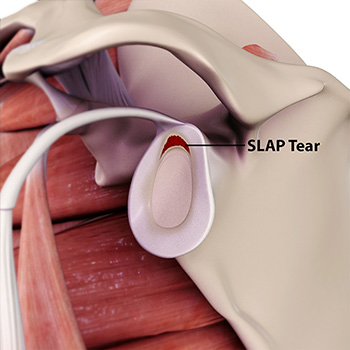

Types of SLAP tear:
- Type I SLAP tear involves wearing out of the top rim of the labrum, but it is still intact with the glenoid.
- Type II SLAP tear is a more prevailing type of tear. In this, the labrum and the biceps tendon detach from the top of the glenoid. It is further classified into anterior, posterior, and a combination of both.
- Type III SLAP tear, a bucket-handle tear, where the torn labrum droops on the shoulder joint while the biceps tendon remains unaffected.
- Type IV SLAP tears a bucket-handle tear to the top of the labrum and extending to the biceps tendon in varying degrees.
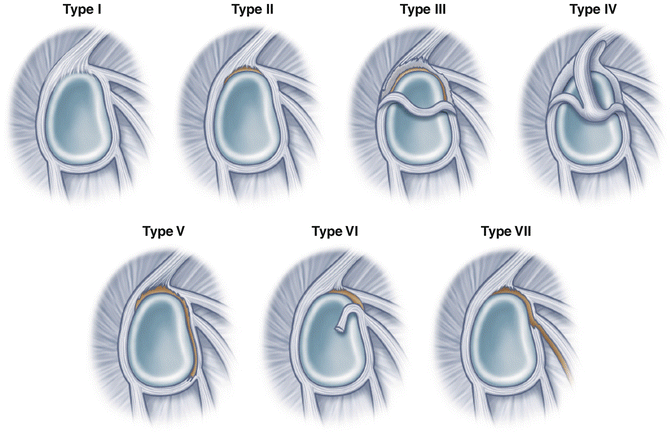

Causes of SLAP Lesion
SLAP lesion can be either caused by a traumatic incident or repetitive overhead motion. Causes include:
- Repetitive use of the shoulder in flinging objects with great force
- Rapid overhead movement of the shoulder
- Trauma due to motor vehicle collision
- Falling onto an outstretched hand or shoulder
- Forcefully pulling the arm
- Lifting of heavy objects due in exercise routines with no time to heal
In patients aged over 30 to 40 years, degeneration of the labrum can be considered as a normal process of aging. Genetic can also be a plausible cause.
Symptoms of SLAP Lesion
The symptoms associated with SLAP lesion are similar to any other shoulder pain. These include:
- Continuous aching pain in the shoulder
- Reduced ROM
- Instability in the shoulder
- Pain when lifting or carrying heavy objects
- Loss of strength in the shoulder
- Popping or clicking sound in the shoulder when moved
- Feeling as if the shoulder may pop out of the joint
Diagnosis of SLAP Lesion
It is difficult and challenging to diagnose SLAP lesion as the symptoms are similar to those of any other shoulder pain. Hence the doctor will thoroughly check the medical history of the patient including the particular sports or activity the patient is engaged in, the initial cause of the pain, and the location.
The doctor will carry out a physical examination of the injured shoulder testing the ROM, strength, and stability of the shoulder. The doctor may also examine the neck to make sure the pain is not coming from a pinched nerve.
The physical examination will be followed by X-rays and MRI scans. An X-ray will not show the labrum as it is a soft tissue but it is helpful in ruling out other shoulder problems.
MRI scan will help in showing the damage caused to the labrum and biceps tendon.
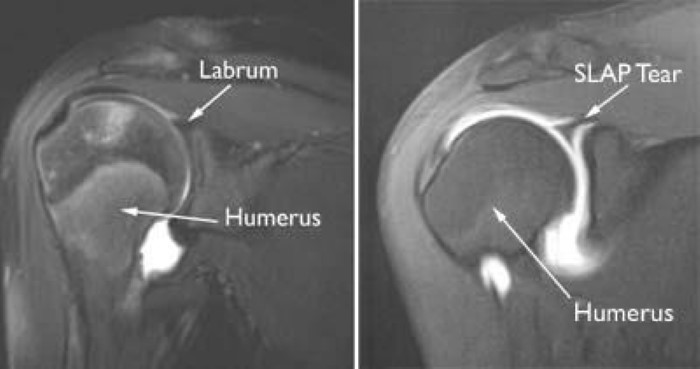

There are numerous labral tests such as Anterior Slide, Biceps Load I and II, Crank Test, Labral Tension and numerous biceps tests such as Speed’s Test, Uppercut Test, Yergason’s Test, Biciptical Groove Tenderness Test to specifically identify the portion of the shoulder affected and to confirm the diagnosis of a SLAP lesion.
Treatment of SLAP Lesion
If the tear isn’t severe most of the SLAP injuries are first treated with nonsurgical methods. These include:
- Ample rest to avoid further injuries to the shoulder is necessary
- Applying ice on the affected shoulder will reduce the inflammation and relieve pain to some extent
- Nonsteroidal inflammatory drugs as prescribed by the doctor will help in reducing the inflammation and also help in minimizing the pain.
- Physical therapy focusing on strengthening, stabilizing, and restoring ROM should be performed.
if nonsurgical treatment fails to improve the condition of the patient the doctor will opt for surgery. SLAP repair surgery will include removing the torn portion of the labrum, trimming the tear, stitching the tear together, or cutting out the biceps tendon attachment.
Arthroscopy is the most common method of surgery.
